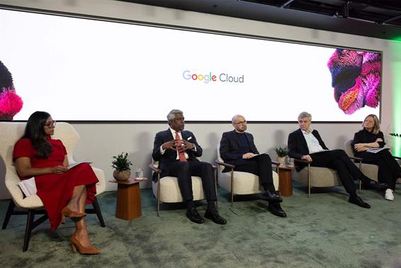Rajkumar Venkatesan, professor of business administration, Darden School of Business, University of Virginia, can spend hours talking about the convergence of three forces – connected consumers, information abundance and technology - specifically AI and machine learning – and how it is leading marketers to ‘AI Moments of Truth.’
He is acknowledged as the person who developed an AI “canvas” for marketers that outlines the journey from node to network and through which marketers can deploy machine learning technologies to compete for customer attention. He is also a co-author of the book "Cutting Edge Marketing Analytics" and is recognised among the top five percent of marketing strategy scholars. In a conversation with Prasad Sangameshwaran of Campaign India, he talks about using data and algorithms to personalise marketing.
Is the adoption of MarTech still being considered more the space of a CTO than a CMO?
Right now, I think it does, but it should be more like the CMOs role. There is an investment and these are shared between the CTO and the CMO. The main challenge with most companies is that survey after survey these days say that companies don't have a strategy on AI.
Does AI rely too much on data and analysis and less on creativity?
Marketing is a mix of both. But I think what we are seeing is that machines are also getting into creativity. So we heard about the Nike ads and so on.
In a scenario where even the messages are written by machines and they are no longer just deciding where they're placed, the role of the marketing manager is now about metrics and strategy and not on deciding the promotions and the creatives. In digital media, the message is written by the machines now. So it's starting to get better. Then, the difference or the separation between quantitative data and qualitative is no longer there.
So, are we beginning to see the end of the advertising agency?
Not really, because the ad agencies will change, there will be a new kind of ad agency.
How do you define the ad agency of the future?
I don't think it's like the immediate future. It could be even 20-30 years. I think they have a big enough service.
What's the one big key message that you're driving through your forthcoming book?
The message would be -- for the fastest way to do marketing and personalisation at scale, you need machines. We give a five step process on how to include that into your marketing strategy. And marketing doesn't begin with the machines. It begins with the customer and customer experience, and how do you personalise the customer experience? Then the machines are going to help you get there with the right strategy and the metrics are still decided by the marketing manager. And the role of the marketing manager now is to be a coordinator and to figure out what direction to go. The rest can be run by machines.
In this journey, where are we seeing the initial slip-ups happening? What are the kind of dark spots or the potholes to watch out for?
I think the main challenge is actually the quality of data. Because, if marketers have gone through a retail channel, they don't have access to the first party data on consumers. For example, a consumer goods company wouldn’t know the end-consumer who’s repeatedly buying detergents or soaps of the same brand. And the base of online purchases is still too small.
So first you need to collect data on consumers directly. And that's where the purchase of Dollar Shave Club was very important for Unilever. There's another example in Unilever, Thailand. More than a third of the population are on the Unilever database with opt in. That is what they use then to run personalised messages. They've spent a lot of money actually building the database themselves, to then start deploying machine learning. So the first challenge for traditional CPG firms is data and first party data.
Then, there are other challenges. If you're a financial services firm and you grow by acquisitions, you cannot connect different sets of data, then you still cannot do much of these things. So the key is to find at least one place where you have some good data about consumers that you can try and act upon.
So which industries are better placed in this journey?
Financial Services; because they are essentially a digital business. I like even what CPG companies like Coca-Cola have done through their vending machines. Consumers basically go to the vending machine and choose different combinations and then get the juice they want. Now, all of those machines are connected with IoT and the data goes back to Coke. So one of the things they did was they started this drink called Sprite Cherry. No researcher told them that such a drink will be famous. But that's what people are ordering on the vending machine. What Coke had to do was to observe the trend and they launched this product. And it is one of the biggest hits now.
You have to start using data. Because what is happening is the mindset is shifting to “test and learn”, rather than coming up with a grand blockbuster idea that is going to take off. It's a lot of good test and learns that you're using, because you cannot personalise with a blockbuster idea. You have to learn about consumers and then give them the offer that they think is relevant for them. That's a lot about experimentation and insights about consumers and going back and that also means that the decision making chain has to kind of be flattened.
I don't know about the hierarchy. But I can tell that marketing teams will operate more like a software development process –agile development, where you have a lot more agile projects that are run like on a two week sprint. That's a really new game for marketers.
The steps are experiment, expansion, and then, there's monetisation by building a services platform, a new revenue stream that is based on this. Like the Washington Post has its own publishing services. A lot of their newspaper headlines are written by machines and so are stories on the election results and sports results. As the whole story is written by a machine, they use the journalist for more investigative reports. And the journalists actually trained the machines. And now what they're doing is they've taken all this and made it into a software service. They sell the service to others like, Chicago Tribune, Toronto Blue and other newspapers. So now they've built a whole new services business on top of their existing newspaper business. So that's the monetisation part. There's a monetisation that they've done that is completely new, right from what they learnt in one place. So that's the last level, like actually creating a new platform for a new revenue stream. This is the level three.
Globally, is there enough investment backing this? Or, is it the learning phase where companies are not investing enough?
I don't have data on that, but from what I hear from conversations with companies, the ones who are realising there is a lot for every company, are the ones who're adopting this.
There are many who are basically hoping this is just a fad and that it will go away. By the time they play catch up, it might be too late, which is the problem. That is really the disruption that is coming now – the data that all the tech platforms are generating is going to create new kinds of marketing and products. If you haven't first installed the technology if you haven't gone to being Consumer First, if you haven't collected the data, you're already behind. You have to collect that now. Then, on top of that, the companies who have already done that have started applying the data to getting insights.
If brands have to embark on an AI journey, what would the key dos and don'ts?
At least think about the customer. It's about the customer, not the algorithm. Companies are more inward looking, rather than outward looking. The tech and the algorithm is not where the solution is. That will happen. You need to first have a strategy about how you're going to serve the customer and develop a better customer experience. These are the two places where they fall flat. And then they don't invest time in collecting the good data that they need.
And then there's the other extreme where it's mostly about this email marketing optimisation software, that programmatic, and that's all they talk about. It’s not about, okay, what does the customer need? Don't think just because you have got a lot of data, it means it's good data.




.jpg&h=334&w=500&q=100&v=20250320&c=1)


.jpg&h=334&w=500&q=100&v=20250320&c=1)



.jpg&h=334&w=500&q=100&v=20250320&c=1)






.jpg&h=268&w=401&q=100&v=20250320&c=1)
.jpg&h=268&w=401&q=100&v=20250320&c=1)

